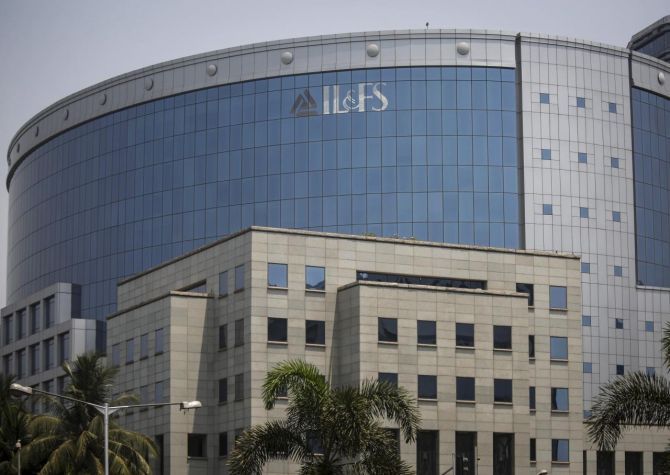The board will first need to unpack IL&FS - it has 169 group companies with 24 direct subsidiaries, 135 indirect subsidiaries, six joint ventures and four associate companies, says Amit Tondon.

Given the size of the of the problem, Infrastructure Leasing & Financial Services (IL&FS) is the largest bankruptcy facing the Indian financial system.
For the government to stand aside and let events take their own course was never going to be an option.
Its intervention is welcome, in large part for the signal this sends. Appointing a new board is the easy first step. Now the heavy lifting has to begin.
First the board needs to appoint a chief executive officer (CEO) and a new management team.
These are the people who will separate the wheat from the chaff.
They will first need to unpack IL&FS - it has 169 group companies with 24 direct subsidiaries, 135 indirect subsidiaries, six joint ventures and four associate companies.
Subsidiaries have subsidiaries. IL&FS Transportation Network Limited, for instance, has 72 subsidiaries, with the offshore subsidiaries having even more subsidiaries. This is the starting point of any analysis.
They will then need to look at each entity and each project housed within it, with the linkages and money flows.
Also look at related party transactions undertaken, not just between parents and subsidiaries, but also between ‘fellow subsidiaries’.
These should be revisited primarily to look at their legitimacy and establish whether profits of any entity were being artificially inflated as a consequence. 169 group entities warrant this exercise.
Once the viability of each project is established, the board will be able to decide which project can be sold, and those that require a work-out to make these projects attractive to potential buyers.
Integral to this exercise is the financing structure for each of the projects and their cash flows.
This will help determine the funding gaps both at the project and consolidated level, and importantly will bring focus on how these are to be met, factoring in the optimum leverage profile for the business as a whole.
This brings me to the decision of the government to supersede the board and replace it with one of its own choosing. In one step, the board regains credibility.
Shareholders and lenders will be comforted by the board with Uday Kotak, the tallest banker, Vineet Nayyar, who dealt with the Satyam fiasco first-hand and emerged victorious, G N Bajpai, with his deep linkages to LIC and Sebi and serving (Malini Shankar) and retired (GC Chaturvedi, Nand Kishore) civil servants.
Having trustworthy persons on the board - or certainly those who enjoy the government’s confidence - together with shareholders nominees, helps in many ways.
First in calming markets - certainly at the time of writing, it has.
Second, the fear building was that decisions will just not be taken and that even if there is a realistic bid on the table neither will the government-owned shareholders nor will the state-owned banks be able to decide.
This risked even serious players from bidding for the assets, substantially lowering the expected recovery rates.
The new board signals that the government is backing it, providing the needed comfort to shareholders and to the various lenders.
This will empower them to take bold decisions within a reasonable time frame.
For example, shareholders should now be more sanguine in subscribing to the rights issue as a few adults have been brought into the room to monitor it. The same applies to asset sales.
Third, this is a board the government can now work with. If there are payments due from the government entities, the issues can be resolved on a priority basis.
If the projects are stuck because of land acquisition, the board can have these expedited. If the viability of projects is questionable, the board can lean on the government to modify the concession terms.
Even as this work is underway to realise value from the business, it is the time for market participants to introspect.
For rating agencies to ask themselves what is it that they missed that led IL&FS to ‘jump to default’.
For lenders to ask themselves why they continued to lend when leverage was way beyond what may be considered prudent.
For mutual funds to ask themselves why they blindly accepted what the rating agencies said and did not do their own homework.
For the regulators to question their own action when they first spotted signs of risk.
For directors to ask themselves why they were not asking more questioning of the management and let themselves be blindly led.
And for shareholders to ask themselves why they ignored the auditors warning regarding the “company’s ability to continue as a going concern” or the “management’s plan to raise funds” and waited for the company to default.
Photograph: Shailesh Andrade/Reuters
Amit Tondon is with Institutional Investor Advisory Services India Limited. Views are personal.











